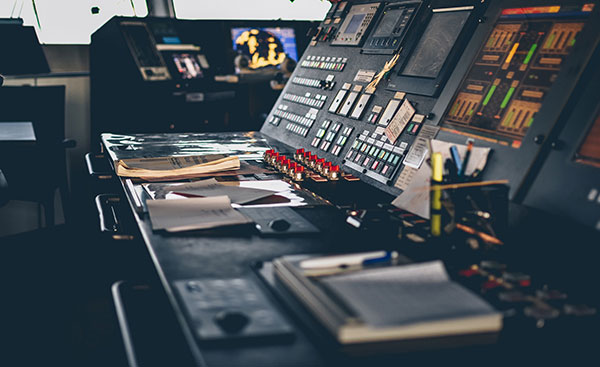Equipment
Safety
Systems
Innovative technologies needed for maritime safety

photo: PEXELS
Shipping can be dangerous business. International safety standards and regulations for seafarers are helpful, but new technologies are also needed to avoid disasters at sea. For one thing, the increasing use of autonomous vessels will require highly efficient technical safety systems and devices.
On the global level, the International
Maritime Organisation (IMO) has
developed numerous regulations that are
followed by all shipping nations. Many
of these regulations deal with maritime
safety.
The Maritime Safety Committee is
IMO’s senior technical body on safetyrelated
matters. The Sub-Committee on
Ship Systems and Equipment (SSE) deals
with a wide range of technical and operational
matters related to systems and
equipment on all types of ships. They
include life-saving equipment, appliances
and arrangements, and fire-safety systems.
The era of automation requires an
even wider range of technologies for
safety and security on the seas.
INTELLIGENT AWARENESS
As the technology of autonomous ships
advances, some of the ships may be crewless
in the course of the next few years.
Many pilot projects for autonomous vessels
have already been launched.
A number of safety systems form part
of the ongoing development of autonomous
ships, but such technology can also
be useful in the existing shipping environment.
For instance, the Intelligent awareness
(IA) systems are set to become the
next generation of digital technologies to
improve safety the maritime sector. They
will utilise sensors, high-resolution displays,
and intelligent software. In part, this
technology is likely to support other maritime innovations, including the autonomous
vessels of the future.
The IA system will make use of sensor
technology and software to minimise
the risks that navigators face in constantly
changing weather conditions, darkness, or
in congested waters. Through data collection and information display systems, the
IA system is expected to raise the standard
of navigational safety as well as operational
efficiency.
By producing a 3D map of the vessel,
with the aid of light detection and pulsed
lasers to measure distance, an external
overview of the vessel’s surroundings can
be made. This will help to create an accurate
bird’s eye view of the area surrounding
the ship.
Furthermore, the IA system can
supplement the navigational tools already
available from the electronic chart
display & information system (ECDIS) and
radar.

photo: UNSPLASH
SMART DISPLAYS AND NAVIGATION SYSTEMS
The maritime electronics manufacturer
Furuno Electric and Japanese carrier line
Mitsui Osaka Lines have collaboratively
developed Intelligent awareness (IA) information
display systems using augmented
reality (AR) technology which will support
vessels at sea.
Such systems can assist in the development
of autonomous ship operations.
They are able to provide information on
the presence of other ships in the vicinity
around the vessel, as well as other landmarks
and obstacles to be encountered
during the journey.
Data collected from the automatic
identification system (AIS) can be displayed
on tablets and other devices. Some devices
may be able to display images taken from
the bridge of the surrounding landscape.
Moreover, images will build on AR technology
to provide visual views to crew to
assist with the surveillance of the ships.
Furthermore, the navigation manufacturer
Raytheon Anschütz and Vard Electric
AS have developed the Integrated Navigation
System (INS). It is a combination of navigational
data and systems interconnected
to enhance safe navigation of the vessel.
Managing routes and charts, the INS
will also share data across the network as
well as controlling central tasks and services,
including data handling and distribution,
system monitoring, alerts and settings.
According to Raytheon, the system
has been designed for smart navigation
through safe and simple operation.
VIRTUAL REALITY AND TRAINING
Training programs based on Virtual Reality
(VR) are already on the market. Such
programs can be utilised for developing
new skills for the crews of hi-tech vessels.
Continuous training is essential for
maritime safety. In addition to training,
effective online training methods for the
maritime industry can bring benefits of
substantial value both for the company
and the individual seafarers. Shipping is a
demanding business area, with constantly
changing training needs. Therefore, online
training solutions make the training processes
easier and faster.
Innovative distance e-learning solutions
could allow seafarers to learn while
they continue with their work, in order to
continue to develop and improve the specific
skills they will need.
To further enhance onboard crew
safety, ship operators and owners are
beginning to investigate developments
in wearable technology. It can be used
to monitor heart rates and other healthrelated
data of crew members in real time,
to ensure the continuous health of the
crew on board.
Cyber security at sea is also becoming
a crucial issue as automated ships and
systems are utilised more and more frequently.
Identifying threats and vulnerabilities
is important for preventing cyber-attacks.
Risks should be assessed and protection
methods developed to neutralise cyber
security risks.
Text by Ari Monenen
Data for this article has been collected
from: Government Europa; IMO; Raytheon
Anschütz GmbH; and Safety4sea.



